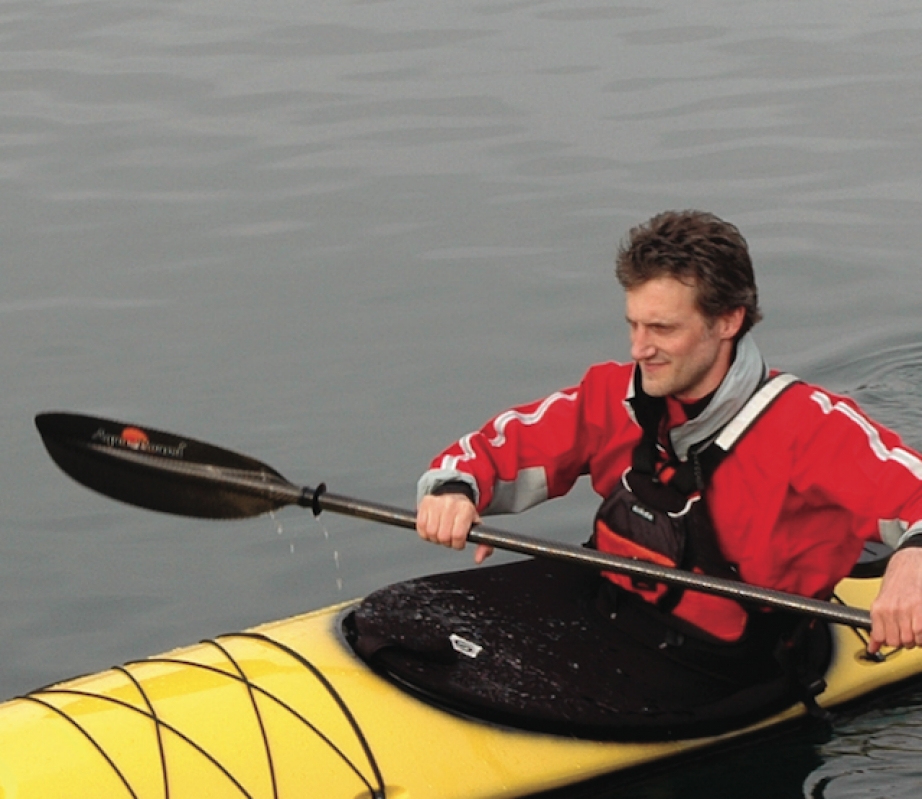Josef Sedivec founded Seda Kayaks in 1969. Before leaving his native Czechoslovakia for California, Sedivec was a member of the Czech national Whitewater Team, and in the early days, Seda’s roots were in whitewater. so although Sedivec sold the company in 2005, it’s fitting that one of the company’s newest sea kayaks has a link to whitewater too.
The Ikkuma 17 is the product of freelance designers stewart Mounsey and James Mole—both highly talented whitewater paddlers. Mounsey was also part of the design team at confluence Watersports, the parent company of Wilderness Systems and Wave Sport Kayaks.
The Ikkuma is billed as a “Greenland style” kayak, but it owes a nod to the British tradition too, having graceful upswept ends, three rubber hatches (including optional day hatch), full perimeter lines and a drop skeg.
General fit and finish of Seda boats used to be a little on the “utilitarian” side, but have greatly improved over the last few years. The Ikkuma is an attractive kayak with a very polished appearance and slick modern lines. our Kevlar test boat weighed just under a svelte 43 pounds.
The Ikkuma’s cockpit is quite large and it’s easy to drop your butt into the seat and then pull your legs in afterwards. While my meager 150-pound frame found the seat overly large, bigger paddlers really liked the comfort. I also wanted more aggressive thigh hooks for my skinny legs, but again the bigger guys enjoyed the fit and were able to grip the boat effectively.
The hull has a very distinct hard chine that runs most of the length of the kayak, and the bottom of the boat is quite flat mid-ship. initial stability is good and it takes a little bit of effort for a smaller paddler to move the kayak off of an even keel and put the boat on edge. once on edge, the boat is stable; when edged really aggressively, the Ikkuma’s stern will break free of the water and skid out for super-tight turns.
The Ikkuma nicely balances tracking and manoeuvrability, as well as sportiness and practicality. There’s enough volume to comfortably carry gear for a week-long trip, but not so much that it loses its playful feel. The Ikkuma is best suited to paddlers in the range of 180 pounds and up who are looking for a sporty “do-everything” sea kayak.

RATCHET POWER
The NSI backband is cushy and provides very comfortable and effective support, adjusting easily via two “snowboard boot style” ratchets. Be warned, however, that ratchet mechanisms tend to corrode in the marine environment, so be sure to rinse thoroughly with fresh water after use in the ocean.
SKEG ENVY
The skeg blade is a very slick-looking carbon fibre unit that is foil-shaped rather than simply being manufactured from flat metal stock. The skeg worked flawlessly throughout testing. And besides, it’s carbon! Cool.
WHICH WAY IS UP?
The skeg control works the opposite way to most. Pushing the slider forward lowers the skeg, while pulling the slider back retracts it. This is because the slider’s cable is attached at the top of the leading edge of the skeg, which keeps the cable under tension while putting the skeg down—a clever approach that should eliminate the potential of kinking the cable when trying to drop a skeg jammed by pebbles.
SPECS
length: 17 ft (5.2 m)
width: 22 in (56 cm)
depth: 11.5 in (29 cm)
cockpit: 33x17in(84x 43 cm) capacity: 350 lb (159 kg)
weight: 50 lb fibreglass (22.7 kg) 44 lb Kevlar (20 kg)
MSRP: $2,640 US fibreglass, $3,240 US Kevlar
Optional day hatch: $200 US
 This article first appeared in the Summer 2007 issue of Adventure Kayak magazine. For more boat reviews, subscribe to Adventure Kayak’s print and digital editions here.
This article first appeared in the Summer 2007 issue of Adventure Kayak magazine. For more boat reviews, subscribe to Adventure Kayak’s print and digital editions here.




